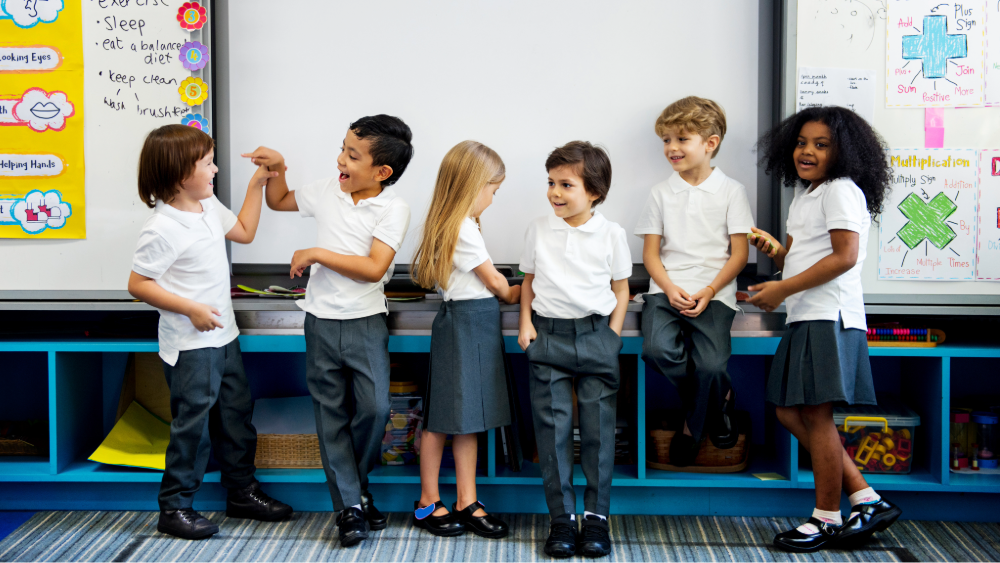
On the surface, school life looks a lot like it did before the pandemic, but look a little closer and it’s clear that children’s mental health and wellbeing hasn’t fully recovered from the effects of Covid.
Teachers and school leaders remain concerned about their students’ state of mind and the impact it’s having on their learning. In the Generation Catch-Up Report, our comprehensive survey of 500 school leaders, 41% of senior leaders say issues relating to students’ mental health and wellbeing have had the greatest negative impact on their learning.
The school leaders in the report suggested some effective strategies to help rebuild children’s confidence and resilience.
1. Open up conversations around anxiety
When students have the opportunity to discuss their anxieties openly, they are better prepared to recognise the causes of their anxiety and to manage their emotions.
Peter Hall, assistant headteacher at Beacon Academy explains how this happens at his school. “We run a counselling service here and at our sixth form site, and we buy in the services of an external charity.
“It’s important to be aware of the flashpoints when more people are anxious – for instance when deadlines are approaching, or tests and exams.”
2. Create a culture of acceptance and respect
There are many ways students can support each other and help their peers feel valued. Schools can facilitate this by providing the time and space for activities which bring pupils together, as Chris Kitchen, assistant head of Ysgol Aberconwy Secondary highlights.
“We have opened up new resources. There are year group breakfast clubs to help pupils start the day well, and new clubs for pupils with specific needs such as ADHD are making the school a more inclusive place to be.
“Our main job is teaching, but pupils can’t learn if they are struggling with their mental health.”
3. Build children’s social skills
Having been unable to socialise normally at a critical time in their development, many young people still find it difficult to relate to others. Schools are putting new measures in place to support students with relationship building.
Ieuan Price, director of digital learning at St Illtyd’s Catholic High School describes his school’s approach. “There are a lot more tears, arguing and falling out than we would normally see.
“Staff are having to upskill to deal with this. They are putting aside time in the day to help pupils resolve their difficulties and helping them to learn how to deal with their emotions in these situations.”
4. Spot newly vulnerable pupils
Some children who were previously well settled have found school life more difficult since the pandemic. Strategies such as those designed by Southchurch High School can help to identify these newly vulnerable children, as Helen Stone, their data manager explains.
“We have created a new category in our Management Information System (MIS) called ‘watch’ to capture children who do not currently fall into the SEND category but who need additional support in the school setting.
“These children are supported through the Curriculum Plus programme and we have employed a member of staff to help pupils with aspects of socialising and pastoral care on an individual basis.”
5. Join up wellbeing and learning
Mental health and wellbeing have a powerful influence on how pupils perform at school, and some schools are finding ways to measure the impact of pupils’ wellbeing on their attainment.
“Pupils have always been given a current and predicted grade, and an attitude to learning grade, but teachers told us it was not giving them enough depth of information about the pupils’ wellbeing,” explains Ieuan Price, director of digital learning at St Illtyd’s Catholic High School.
“So we introduced a new set of measures called the three Rs: respectful, resilient and resourceful. Children are given a score for each of the Rs by every teacher in every subject. These scores are recorded on our MIS along with attainment so our wellbeing team and our academic teaching staff can make links between a pupils’ attitude and progress, and step in to support them when needed.”
6. Work closely with parents
Some children, particularly those at primary school, are still finding it difficult to separate from home and parents on a school day. These pupils need a gradual, step-by-step approach to help them fully re-engage with school.
Donna Faley, headteacher of St Thomas More Catholic Primary, a voluntary academy, outlines her school’s practice. “We have a morning nurture group which is available for any child who has difficulty separating from parents when they arrive, and some children access this daily while others dip in and out of it.
“It’s important for teachers to share information and talk with each other about how a child appears to be responding to counselling or mornings in the nurture group.”
The pandemic has had far-reaching effects on the social and emotional wellbeing of many children, but teachers and school leaders are helping children manage their anxiety and rebuild their enthusiasm for learning.
To find out more about school leaders’ wellbeing strategies download our free Generation Catch Up report.


